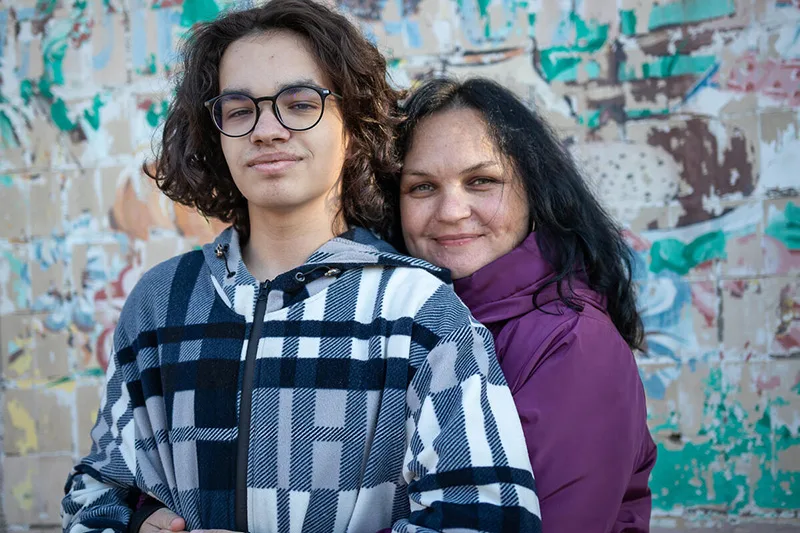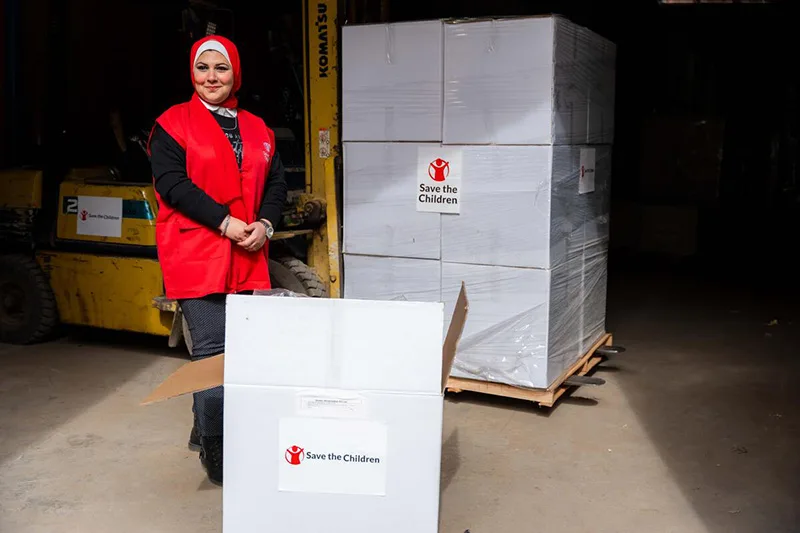1 in 11 children will need humanitarian support in 2025. Is there hope for a brighter future?
Blog by Abdurahman Sharif
Senior Humanitarian Director at Save the Children International
Today, 1 in 11 children faces conflict, hunger, and climate disasters. Save the Children’s 2025 Humanitarian Plan aims to protect 12 million children globally. Learn more about how we intend to do this in this blog.
I want to encourage everyone to believe in better days, to remember that the brightest sun comes after the darkest night. And mainly, to believe in yourself.” – 15-year-old Oleksandr,* from Ukraine
It’s not easy to remain hopeful in a world of rising crises. Where more children than ever before have been uprooted from their homes due to conflict and climate-related disasters. Where one in every five children are now living in or fleeing brutal conflict and are more at risk of harm than any other time in the last 20 years. Where the accelerating climate crisis is leaving children facing more extreme weather in an increasingly unequal world.
But these words from Oleksandr, a child whose life has been turned upside down over the past few years, can be inspiration for all of us.
Oleksandr and his family are from the Mykolaiv region in southern Ukraine. When the full-scale war broke out nearly three years ago, they lived for months under a makeshift shelter in their living room, fashioned together with tables, chairs and blankets. With almost constant bombing and power blackouts, they were too scared to leave, only crawling out to use the bathroom or look for water or food during brief moments of quiet. It was only months later, once their town was de-occupied, that Oleksandr and his family were able to reemerge into the outside world. But life continues to be a fight for survival.
Despite all Oleksandr has been through — and continues to endure — he remains determined to hold onto hope for a brighter future. This is the attitude we must take going into 2025.

This year, a staggering 305 million people will need lifesaving assistance, driven by violent conflict, extreme climate events, and global economic instability. This includes 1 in 11 children. That’s 1 in 11 children who are being robbed of their basic rights — to survive, learn and be protected.
These are children in Sudan who are now facing the world’s largest displacement and hunger crisis. It’s children in Gaza, Lebanon and Syria, who, despite recent pauses in hostilities or shifts in the context, continue to face the threat of hunger, displacement and long-term trauma. Its children like Oleksandr in Ukraine who continue to face relentless bombardments. Its children in Haiti who, amid rising gang violence, are being killed, cut off from food, their homes and schools, or forced to join the ranks of armed groups, simply to survive.
Donate now to protect children in 2025
What’s even more worrying, in the year ahead, more conflicts are predicted, increasing by up to 10% from last year. Driven by economic instability, ideological clashes, increasing polarisation, resource scarcity, and governance failures at local, regional and global levels, as many as 60 active conflicts are predicted globally in 2025. No continent will be spared from armed violence. Climate change will also continue to increase the frequency and intensity of weather-related disasters and intensify competition for natural resources, sparking new conflicts, more displacement and increasing hunger.
At the same time, providing children with the support they desperately need has never been more difficult or dangerous. Today’s alarming levels of humanitarian need fall against a backdrop of an underfunded humanitarian system, rising geopolitical tensions, deteriorating rights norms and mounting disinformation campaigns.
By the end of 2024, just 46% of funding needed to meet global humanitarian needs was made available. While this year, we’ve already seen new funding threats, driven by ideological and political agendas, which could trigger even greater reductions. We’re also seeing repeated disregard for international humanitarian law – universally accepted rules designed to keep civilians and aid workers safe in times of crisis. 2024 marked the deadliest year on record for humanitarian workers and the denial of humanitarian access has reached a historic high.

The challenges are undoubtedly huge, but so is our determination to protect children. As is the resolve of children to demand the change they want to see. We must commit to make 2025 a better year for children everywhere. As Save the Children Canada’s President and CEO, Danny Glenwright, put it:
“Building a better world for children depends on our collective commitment to stand together, act with compassion, and amplify the voices of children.”
Save the Children’s 2025 Humanitarian Plan sets out how we will protect children living in the most dangerous contexts to survive, stay safe and keep learning in the year ahead. We will aim to assist around 20 million people, including close to 12 million children across 46 countries in 2025. We also stand ready to respond to new disasters on the horizon.
In response to the continuing trend of reduced global humanitarian funding, coupled with rising global costs, we will focus on delivering the most adaptive, efficient humanitarian responses that will achieve the greatest possible impact for children. We will:
- Invest in innovative solutions and action that can be taken ahead of anticipated crises
- Build stronger partnerships, innovating with and for the sector, and drawing on robust evidence
- Champion community-led and national responders, following their leadership and supporting where needed
- Continue to use our global voice to speak out against violations of children’s rights and ensure humanitarian aid can be delivered safely
- Listen to children’s demands and amplify their voices as they call for better lives and futures, and a world that holds adults and institutions accountable.
But we cannot do this alone.
Only by working together, with local and international partners, governments, institutions, our supporters – and most importantly with children and communities – can we succeed in delivering on any of this.
Donate now to the Children’s Emergency Fund
At a time when we have to do more with less, we must come together to strive for new paths forward and commit to approaches that will accelerate and amplify our impact for children. We must hold onto hope for a brighter future for children, it is the least they are owed.
These final words from Oleksandr’s mother remind us never to underestimate the impact of our work. Oleksandr now attends one of Save the Children’s Digital Learning Centres in their town — a space he told us helped him to open up again after thinking that life wouldn’t go on.
Before, they [the children] were just sitting there, like dark clouds. But then he found hope for life. When you are shown that there is still a spark, a possibility for something better. That life is here. People showed us that. We had lost hope in life. That was so important.”
Read Save the Children’s 2025 Humanitarian Plan.
Want to help? Donate to Save the Children


